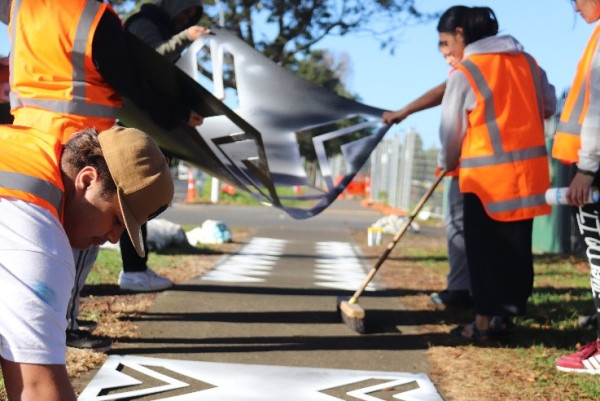Please note the Streets for People programme is no longer active. It was a $30m programme funded through the 2021-2024 National Land Transport Programme to support the Government Policy Statement on Land Transport 2021. 19 projects were delivered by 13 councils across Aotearoa New Zealand with a Funding Assistance Rate of 90%.
The Streets for People programme supported councils to partner with their communities, helping them shape their streets together and create people friendly spaces in a timely and responsive way.
The projects were delivered with the aim to make it safer, easier, and more attractive for people to walk, ride bikes or scooters and take public transport, while improving road safety and network optimisation.
To achieve the Streets for People programme objectives, councils used quick, low-cost, scalable improvements to create more vibrant, people-friendly spaces in their neighbourhoods. These improvements were delivered through pilots, pop-ups or interim treatments that informed permanent changes planned for the future.
Councils worked on projects that aligned with their city or district’s strategic plans. These interim projects allowed communities to see what their streets could look like and work through the changes, provide real-time feedback and experiencing the benefits of more people friendly streets, sooner.
Our Streets for People projects

A parklet installed on a vacant lot on Guyton Street, Whanganui, creating connection between streets, and space for the community. (Credit: Whanganui District Council)
The Streets for People programme was delivered in three phases, and each was a gateway to the next phase:
All councils with walking and cycling improvements already included in their Regional Land Transport Plans (RLTPs) were invited to apply for the Streets for People programme. Thirty councils expressed their interest in participating in the programme.
In this phase, NZTA worked with the councils to enable them to implement Streets for People projects. Councils also developed an overview of their proposed projects and established project objectives, their approach to community engagement and the processes and resources they would use to support delivery.
In this phase, councils worked alongside their community to design street changes that met the objectives they set out in Funding the Foundations. These designs were then installed and adapted based on community feedback, informing future permanent changes to the street. National support for project planning, design, community engagement, implementation and monitoring and evaluation was provided by NZTA.

People use stencils to spray paint patterns on a footpath during Auckland Council’s Maximising Māngere Innovating Streets for People project. (Credit: Auckland Council)
The Streets for People programme was built on learnings from Innovating Streets for People which took place from 2019 until 2021. In this programme, councils and community groups across Aotearoa delivered 89km of street changes in 32 towns and cities. These trial changes included cycleways, parklets, low traffic streets, community spaces, and safer school crossings.
Innovation Streets 2020–21 programme evaluation summary - November 2020 [PDF, 15 MB]
Innovation Streets 2020–21 programme full report - April 2022 [PDF, 18 MB]